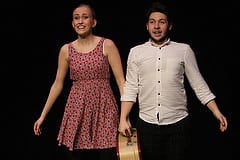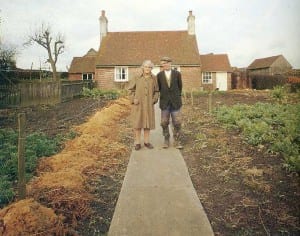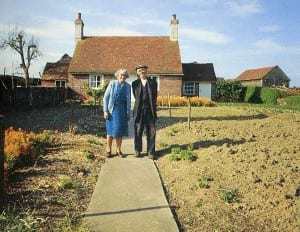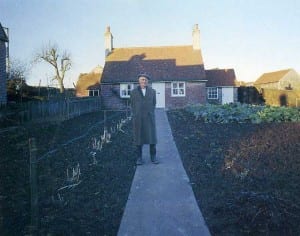Managing the marketing of our theatre company has been a challenging yet rewarding experience. It has highlighted just how difficult it is for new, emerging work and companies to connect with their audience. The way I approached this was to not succumb to the worry of having every seat sold out but, instead, go into the city – our community – and have fun with residents and tourists.
Recently, I fashioned an over-sized polaroid frame which Yasmin and I took into the city to use as a discussion point between ourselves and our potential audience members. The polaroid worked. Not only did this frame act as a discussion point, it was completely in-keeping with our brand, directly linked to the show and it was used for these people to have their photo taken in. This kind of ‘customer’/audience based approach allowed us to quickly engage with our community, as well as share any information or answer any questions that were not available on any of our other external materials. In addition, this acted as a way to build and form relationships with businesses and organisations across the city; as an arts organisation ourselves these relationships are fundamental to the success of a company. Quoting her own book, Ruth Rentschler et al tell us, “Relationship marketing in the arts is defined as having ‘the dual focus of catching and keeping customers and developing long-term relationships between organisations'” (2001, 124). If our company were to continue, it is evident that we have already started to build a client base; that is, groups of people that will recognise our company and what we represent.
Please see photos below.
We would like to thank all the businesses and people we spoke to: House of Cards, Little Red Gallery, Tourist Information Centre, Debutante, Critters Pet Store, Forefront Theatre Company, Topshop, Topman, H&M, Odeon, Student’s Union, Zing Cafe Bar, Lincoln Performing Arts Centre Staff.
Works Cited
Rentschler, R., Radbourne, J., Carr, R. and Rickard, J. (2001) Relationship Marketing, Audience Retention and Performing Arts Organisation Viability. International Journal of Nonprofit and Voluntary Sector Marketing, 7 (2) 118-130.

















